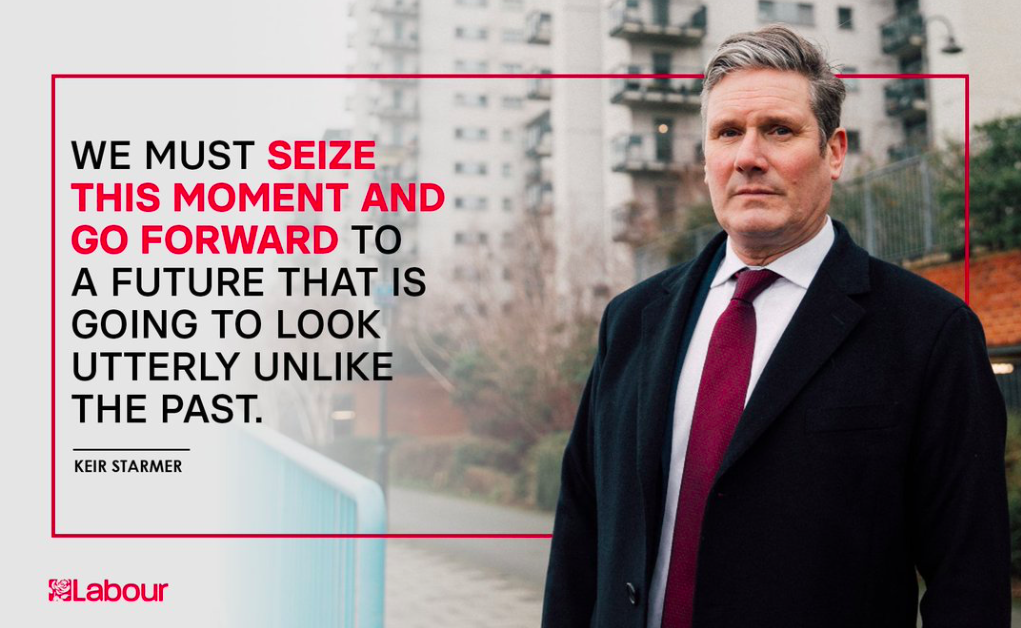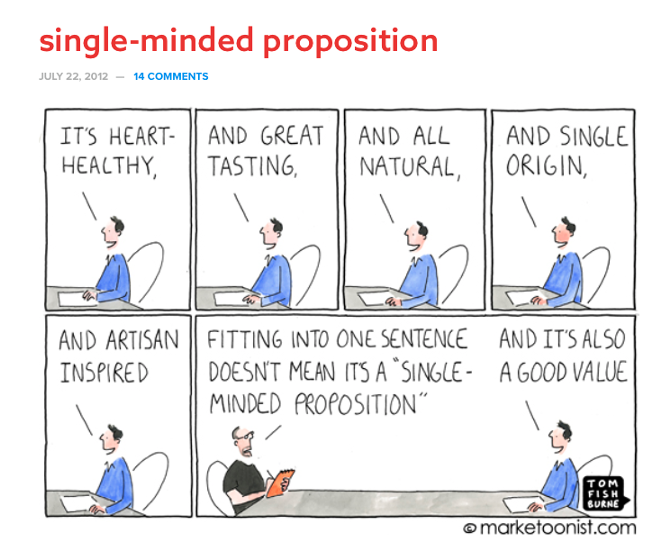
By Liz Doig
The Labour Party released what was supposed to be a rousing message to the electorate this week. Instead, they unleashed a mangled mess of messaging onto social media.
The points they’re trying to make (we think) are:
- This is a turning point
- Let’s make sure we go in the right direction
But these messages are lost in a swirl of management speak and clumsy text. The photo montage is weird too.
How it happens
If you have ever been involved in corporate communications, you know full well how these unholy messes are produced. A series of events that look depressingly like this tends to unfold:
- A need emerges and a senior manager says: “Can we get the social media team to create a hard-hitting campaign? We’ve got to talk about how the future can be different.”
- The social media team springs into action and produces a handful of scamps.
- Word goes out that the campaign is happening and that it’s going to be hard-hitting. More managers and stakeholders become involved.
- When everyone works out how to share visuals on Teams, the comments start to come in. “Shouldn’t it be grittier?” says one manager, “What about tower blocks in the background?” “It needs to be more passionate!” says another stakeholder (after all, it is a hard-hitting campaign).
- The social media team comes up with further executions, which are circulated for review.
- The copy comes back with mark-ups. The word “future” is augmented with “going forward” – because nothing says “future” more than “going forward”. “The future starts here” is crossed out in red pen by one stakeholder who still hasn’t figured out tracked changes, and who’s submitted feedback in a .HEIC file from their iPhone. “SEIZE THE MOMENT!!!! is much stronger!!!” Another sends an email that says: “We need to make the point that this is going to be utterly unlike the past.”
- The copywriter fights a feeling that her role is becoming increasingly redundant and tries a slightly amended version – one that’s still ok, but that she knows is not as good as the first draft.
- Her line manager asks for “a quick catch-up”. She needs to “wordsmith” all the feedback so that it all fits together.
- The copywriter thinks, “Fuck it” and just writes any old garbage. She shuts her laptop and smashes into a bottle of Pinot, even though it’s only Wednesday.
- All stakeholders feel good. Their views have been taken into account. Going forward, utterly different, seize the moment… it’s all in there! Great job. They sign off.
- The campaign launches… and fizzles out. Negligible likes and shares. No debate provoked and no coverage in Campaign magazine.
- The managers and stakeholders realise they’ll have to engage earlier in future projects – and possibly write their own copy. That’ll sort it out.
Sudoku is a game where you have to fit all of the numbers in a single, tiny grid. Messaging Sudoku is the practice of shoehorning every message into the smallest possible space. It’s flawed because readers disengage if you try to say more than a couple of things in a sentence.
Yet it’s a common approach – sometimes because no stakeholder wants their messages to be left out. Other times, it’s because an organisation doesn’t want to – or hasn’t got the confidence – to hang their hat on a hero benefit or message.
I’ve had this pinned to my noteboard for a number of years now. The wonderful Marketoonist captures the situation brilliantly…

It shows that poor messaging can come about through fuzzy thinking – or a lack of conviction about the core benefits of a proposition. Or simply, a decision-maker who’s trying to cover all options and sees no value in only hanging your hat on one thing.
They do this unaware that if they don’t clearly stand for one thing, then their potential consumers don’t really see them as standing for anything.
If this is happening in your organisation, you may find these resources useful. And of course, you can get in touch to discuss your messaging any time.
Why do some senior leaders resist engaging language?
Where does complexity come from?
The benefits of involving fewer people in sign-off
